Navigating the Subtle Signs of Autism in Your Partner
Identifying autism in adults, especially in a boyfriend or intimate partner, can be challenging given the variety of traits and the way many adults mask symptoms to fit into social norms. Understanding the common signs of autism and how it influences behavior and relationships can help foster empathy, improve communication, and build a stronger connection. This guide explores key indicators, the impact of autism on relationships, and available behavioral therapies that can support autistic adults and their partners.
Understanding Autism in Adults: Key Traits to Recognize
What are common signs of autism in adults?
Adults with autism often face challenges that can be overlooked due to subtle or masked behaviors. Common signs include difficulties in social communication, such as trouble understanding others' thoughts and feelings, awkwardness in social situations, and a preference for solitude. Many experience anxiety in social interactions and have trouble making friends.
These adults may take language literally, missing sarcasm or idioms, and may communicate in ways that seem blunt or disinterested without intending rudeness. A strong preference for routines and distress with changes in daily patterns are common, along with intense, specific interests and sensitivity to sensory stimuli like noise or textures.
What are the core characteristics of autism in adults?
The hallmark traits involve difficulties with social communication and interaction, alongside restricted and repetitive behaviors. Socially, autistic adults may avoid eye contact, misunderstand social cues, and find social rules confusing. Repetitive behaviors can include following rigid routines, fixation on certain topics, and repetitive physical movements.
How do sensory differences manifest in autistic adults?
Many autistic individuals have sensory sensitivities leading to discomfort or distress around loud noises, bright lights, or certain textures. Others might show under-responsiveness or seek certain sensory inputs for comfort. These sensory challenges often affect daily functioning and relationships.
Are there gender differences in autism presentation?
Autistic women often present differently; they may mask symptoms by observing and mimicking social behaviors, appear quieter, and display fewer repetitive movements. This camouflaging can complicate diagnosis and support needs.
How do these traits impact relationships?
Challenges such as difficulty reading social cues, sensory sensitivities, anxiety, and a desire for routine can affect relationship dynamics. Understanding, clear communication, and recognizing strengths and differences help support healthy connections.
| Trait Category | Examples | Impact on Adults |
|---|---|---|
| Social Communication | Difficulty understanding others' feelings, bluntness | Challenges forming/maintaining friendships and partnerships |
| Restricted & Repetitive Behaviors | Preference for routines, intense interests, repetitive movements | Anxiety with change, focus on specific topics |
| Sensory Differences | Sensitivity to noise, textures, light | Discomfort in daily environments, stress |
| Gender Differences | Masking in women, quieter presentation | Diagnosis challenges, overlooked needs |
Social Challenges and Communication Differences in Autistic Adults
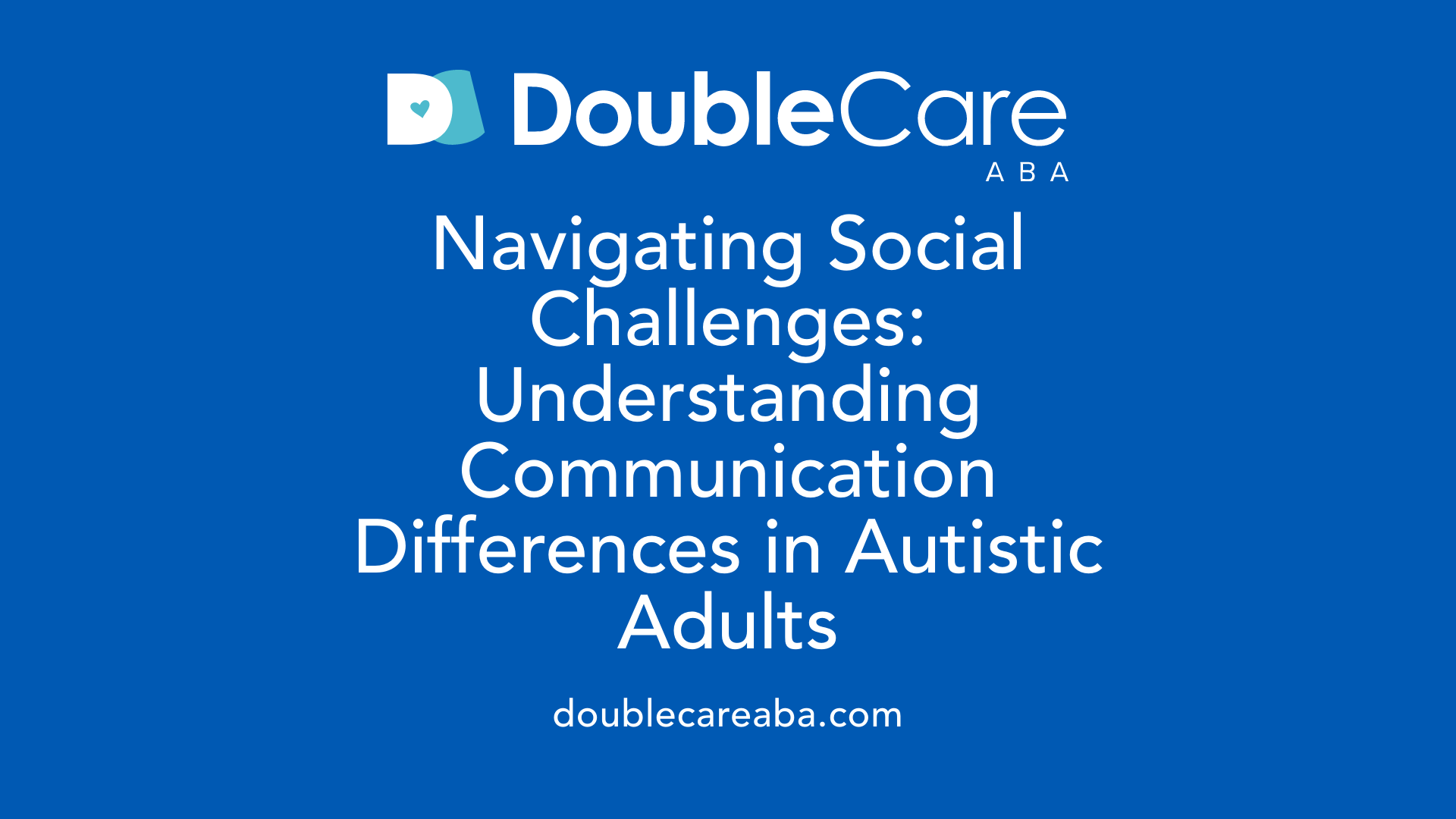
How do social communication difficulties manifest in autistic adults?
Autistic adults commonly face challenges in interpreting social cues. This can include difficulty understanding body language, facial expressions, and nonverbal signals that others use to communicate feelings or intentions. For instance, they might avoid eye contact, not because of rudeness but due to sensory discomfort or difficulty processing social signals.
A frequent issue is taking things literally. Autistic adults often struggle with sarcasm, idioms, or figurative language such as "break a leg." This can lead to misunderstandings during conversations.
Their communication style may appear blunt or disinterested, though this generally stems from struggling to navigate social interactions rather than intentional rudeness.
What is masking behavior in autistic adults?
To manage social difficulties, many autistic individuals engage in masking, which involves mimicking social behaviors to blend in. Examples include forcing eye contact, imitating others' social cues, or suppressing natural repetitive behaviors. While masking can help them fit social norms, it often causes significant mental health strain, including anxiety and exhaustion.
How does social anxiety affect autistic adults?
Social situations can trigger heightened anxiety in autistic adults, who may prefer solitude or have trouble initiating and maintaining friendships. This anxiety can exacerbate difficulties in understanding others and communicating effectively.
Overall, the combination of communication style differences, literal language comprehension, masking behaviors, and social anxiety creates a complex social experience for autistic adults that requires understanding and support.
Routine, Repetitive Behaviors, and Sensory Sensitivities
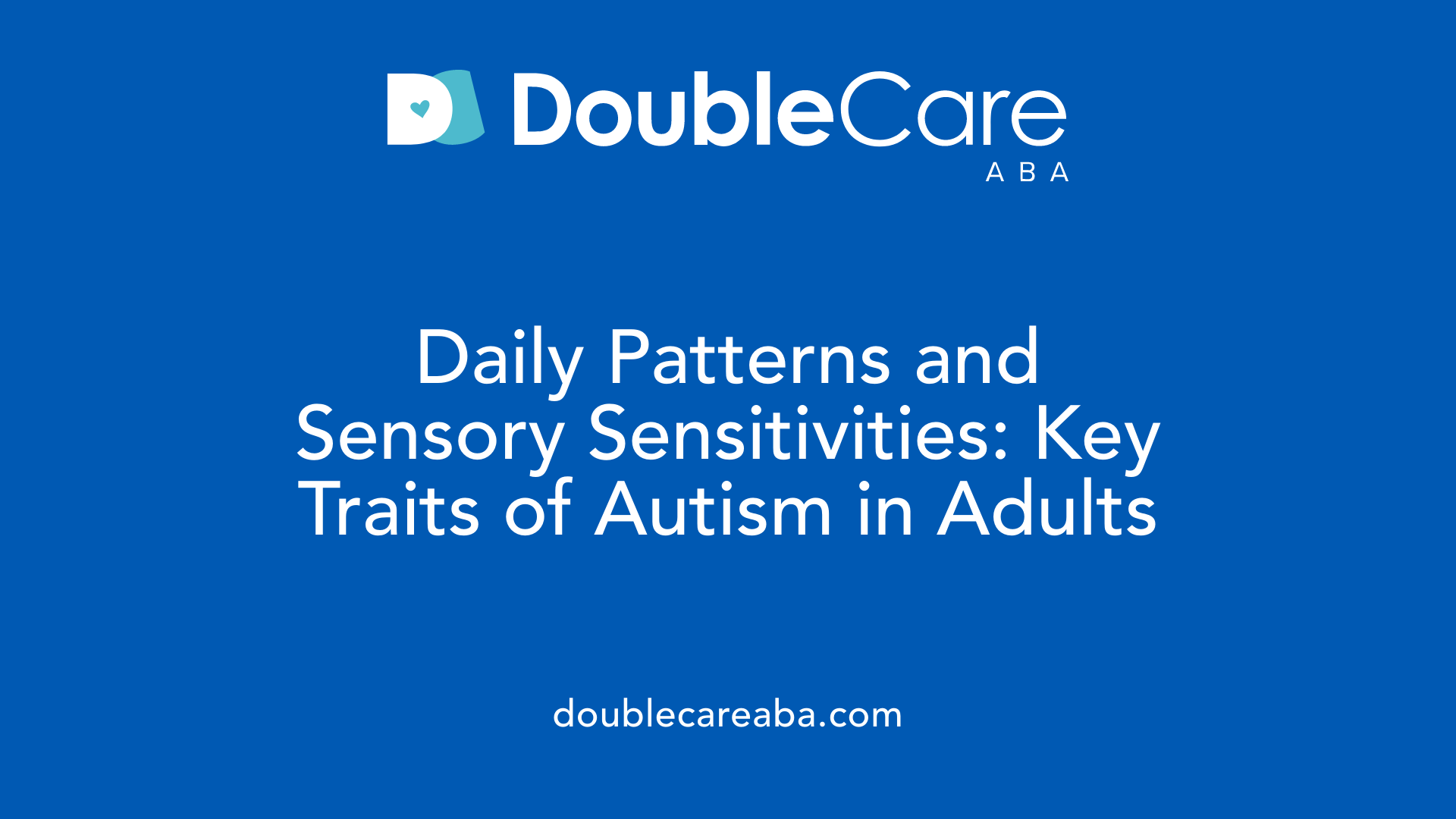
What behaviors and sensory traits are common in autistic adults?
Autistic adults commonly display a strong preference for routines and predictable daily patterns, finding comfort in consistency. Unexpected changes to these routines can trigger significant anxiety and distress. This need for sameness helps manage feelings of uncertainty.
Repetitive behaviors, often called stimming, are also frequent. These can include body movements like flapping hands, twitches, finger tapping, or verbal repetitions. Such actions serve to self-soothe and regulate sensory or emotional overload.
Sensory sensitivities are prominent traits. Many autistic adults experience heightened sensitivity to stimuli such as loud noises, bright lights, certain textures or smells, which can be overwhelming. Conversely, some may show reduced responsiveness to sensory input. These differences influence their comfort and engagement in environments.
A distinct narrowness characterizes their interests. Autistic adults might develop intense focus on specific hobbies or subjects, like video games or gardening, often becoming topic experts with deep knowledge.
Overall, these patterns of routine, repetitive behaviors, sensory sensitivities, and focused interests form an essential part of autism in adults, impacting daily life and well-being.
How Autism Impacts Adult Romantic Relationships
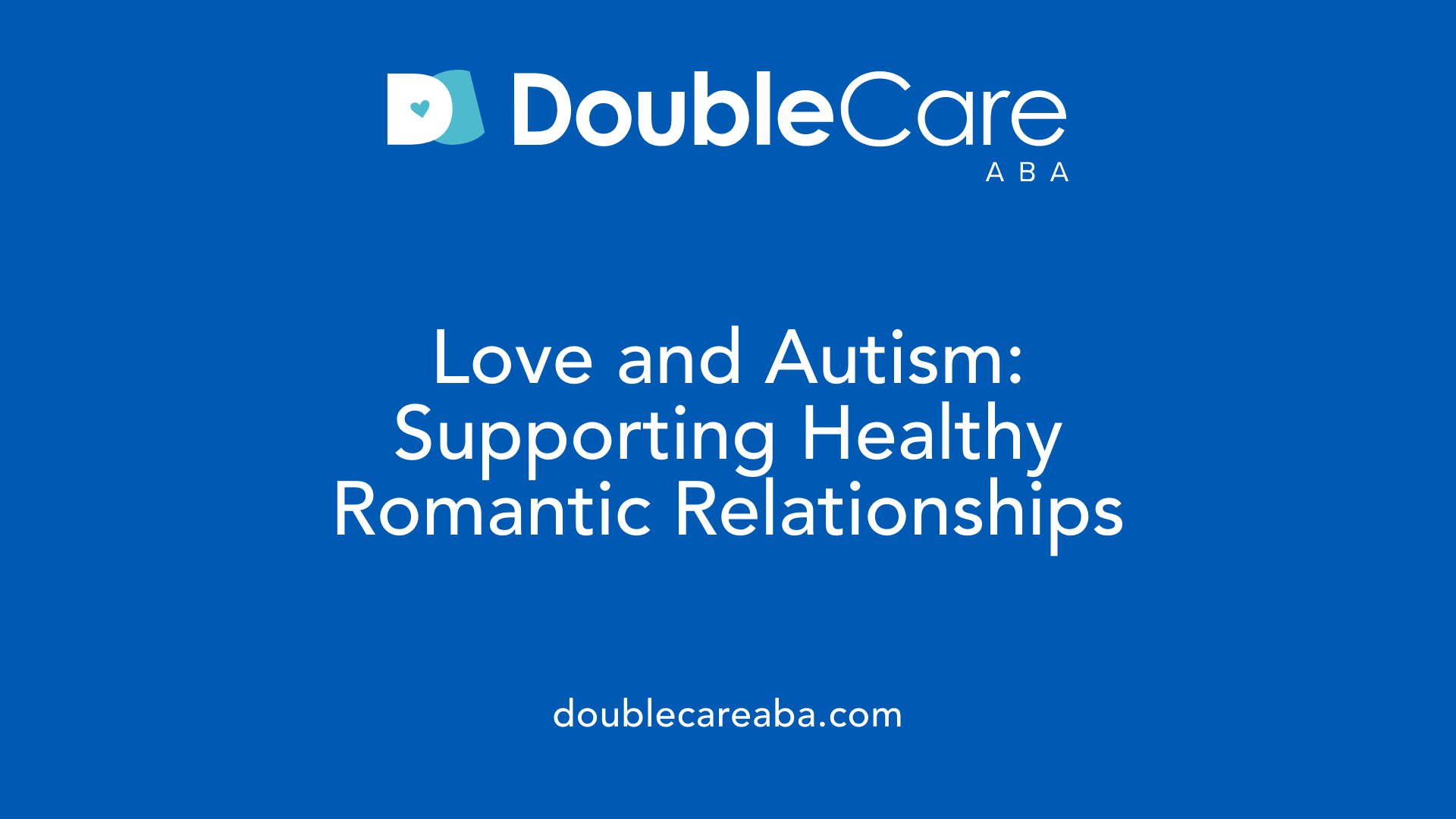
What challenges do autistic adults face in relationships?
Autistic adults often encounter several obstacles in forming and maintaining romantic relationships. They may struggle to read social cues accurately, which can lead to misunderstandings and difficulty sharing interests or emotions openly. For example, the ability to interpret body language or subtle expressions might be impaired, causing communication gaps.
Reading social cues and empathy
While autistic individuals can show profound empathy and emotional depth, expressing these feelings in expected social ways may be challenging. This can sometimes be misread by partners as disinterest or emotional distance, although the internal experience is rich and meaningful.
Managing anxiety and sensory issues in intimacy
Anxiety is common in social situations for autistic adults and can be especially intense within romantic contexts. Sensory sensitivities — such as heightened responses to noise, touch, or light — can also impact physical intimacy and everyday interactions, necessitating adaptations to environments and behaviors.
Supporting healthy relationships
Building mutual understanding is essential. Learning about autism, communicating clearly about feelings and sensory preferences, and recognizing each partner's strengths and challenges can foster a supportive and balanced relationship. Couples therapy with professionals experienced in autism can provide effective communication strategies and deepen connection.
| Aspect | Description | Impact on Relationships |
|---|---|---|
| Social Cue Interpretation | Difficulty interpreting nonverbal signals and social context | Miscommunication, feelings of isolation or misunderstanding |
| Expressing Emotions | Challenges in openly sharing or reading emotional cues | Perceived emotional distance, need for explicit communication |
| Anxiety | High levels of stress in social or intimate settings | Avoidance of social outings, stress impacting relationship quality |
| Sensory Sensitivities | Heightened or diminished sensory responses (touch, noise) | Need for environmental modifications, affects physical intimacy |
| Empathy and Connection | Deep emotional capacity, sometimes masked by communication style | Strong potential for meaningful, supportive partnerships |
Recognizing Masking and Its Effects on Mental Health
What is Masking in Autism and How Does It Affect Individuals?
Masking in autism involves consciously or unconsciously hiding autistic behaviors to fit into social settings. This can include imitating social cues, forcing eye contact, adopting different personas, or using subtle stimming tools like fidget spinners. Many autistic adults engage in masking to avoid negative reactions or social exclusion.
Common Masking Behaviors
- Mimicking others’ facial expressions and gestures
- Suppressing repetitive movements or vocalizations
- Forcing eye contact despite discomfort
- Adopting scripted or rehearsed social responses
Impact of Masking on Mental Health
While masking can help individuals blend in, it often comes at a cost. Prolonged masking contributes to increased anxiety, chronic stress, and burnout. These mental health challenges may manifest as feelings of isolation, exhaustion, and depression.
How Masking Affects Diagnosis and Understanding
Because autistic adults may successfully hide their traits, diagnosis can be delayed or missed entirely, especially among those who appear quieter or more socially typical. This obscuring of autism signs complicates not only clinical recognition but also personal understanding and acceptance.
Understanding and acknowledging masking is essential for providing proper support. Recognizing subtle social behaviors and the toll of constant masking encourages more compassionate approaches to mental health care and diagnosis for autistic adults.
Applied Behavior Analysis (ABA) Therapy: An Overview
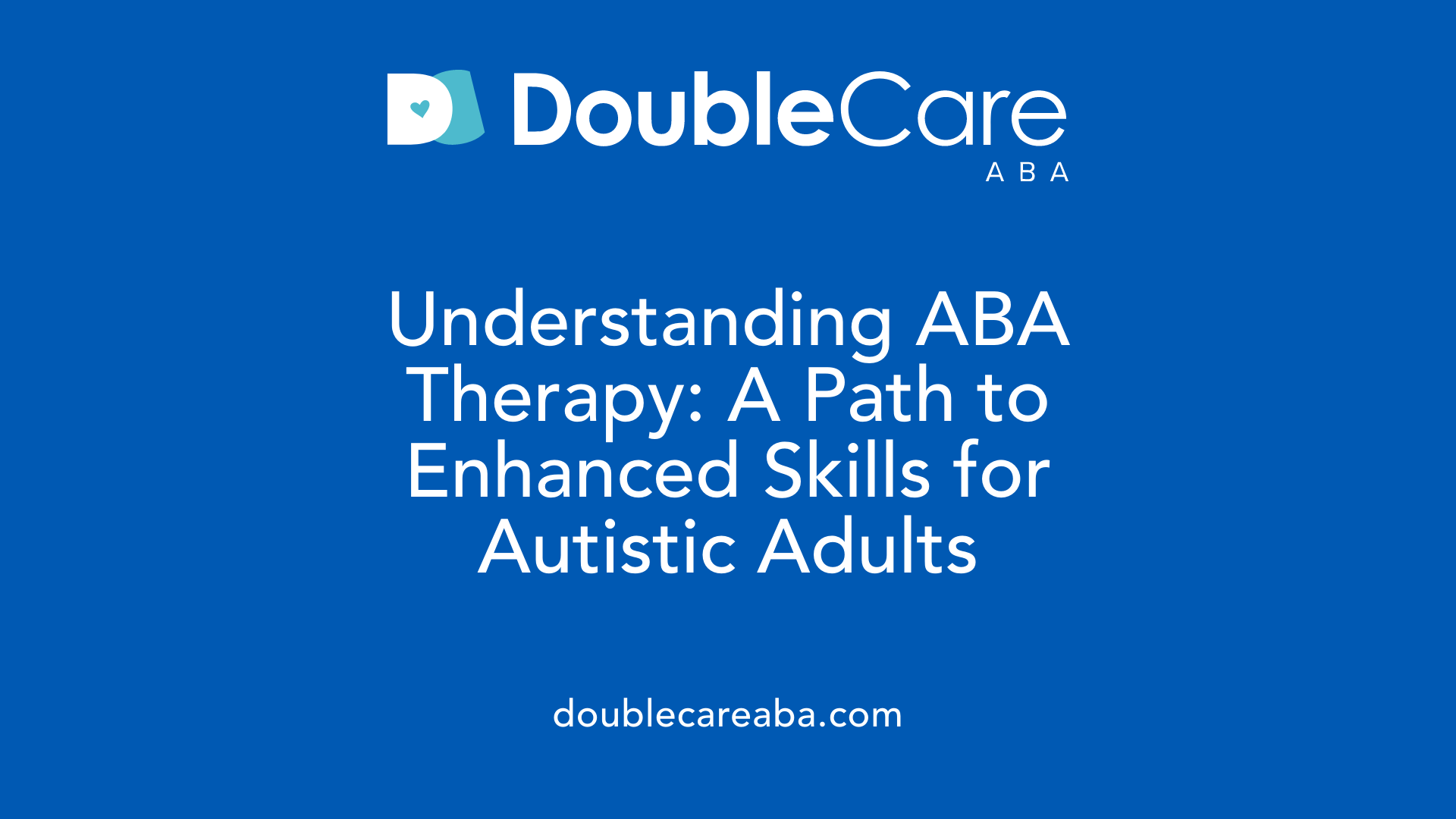
What is Applied Behavior Analysis (ABA) therapy and how is it used to support individuals with autism?
ABA therapy is a scientifically supported method focused on understanding and improving behaviors. It uses learning principles to encourage beneficial behaviors while reducing those that are disruptive or harmful. The therapy aims to enhance communication skills, social interactions, and independence, which are often areas of difficulty for individuals with autism.
Principles and Goals of ABA Therapy
The core principle of ABA is that behavior is learned and can be changed. The therapy targets specific skills and behaviors using positive reinforcement, helping individuals build new abilities in a structured and measurable way. Goals are personalized and may include improving communication, teaching social skills, or increasing daily living skills.
Therapy Methods and Techniques
ABA therapy employs various techniques such as Discrete Trial Training (DTT), which involves breaking skills into small, teachable steps with clear instructions and rewards. Another method, Pivotal Response Treatment (PRT), focuses on pivotal areas like motivation and self-management to promote broader skill development. Data collection and analysis guide the therapy to ensure progress.
An Individualized Approach
ABA is tailored to each person's unique strengths and challenges. Therapy sessions are commonly delivered one-on-one in environments such as homes, schools, or clinics. This individualized attention allows for adjustments based on the individual's response, promoting effective learning and growth.
This approach is widely used across age groups, including adults with autism, to address complex social, communication, and behavioral needs that can impact daily life and relationships.
Key Goals of Behavioral Analysis Therapies for Autism
What are the key goals of behavioral analysis therapies for autism?
Behavioral analysis therapies for autism, such as Applied Behavior Analysis (ABA), focus on several important objectives designed to support autistic individuals' development and quality of life.
Improving Communication
One primary goal is to enhance communication skills. This includes teaching both verbal and nonverbal methods to express needs, share thoughts, and engage socially. Improved communication helps reduce frustration and supports better connections with others.
Reducing Challenging Behaviors
Behavioral therapies aim to decrease behaviors that interfere with learning or social interactions. This involves understanding the root causes of these behaviors and replacing them with more constructive actions, using positive reinforcement strategies.
Promoting Independence
A major focus is fostering independence in daily life activities. Therapies encourage skills such as self-care, decision-making, and managing routines, enabling individuals to live more autonomously.
Teaching Functional Skills
Behavioral analysis also targets the teaching of practical skills needed for everyday situations, including problem-solving, play, and social interaction. These functional abilities build self-confidence and help individuals participate more fully in their communities.
Through individualized, structured programs that emphasize positive reinforcement, behavioral therapies work to increase helpful behaviors while addressing specific challenges. Ultimately, this approach supports autistic adults and children in achieving greater social engagement, learning, and independence.
Professionals Behind ABA Therapy: Roles and Qualifications
Who typically provides ABA therapy services for individuals with autism?
ABA therapy is delivered by a collaborative team of trained professionals each bringing unique roles and expertise. Core members include:
Board Certified Behavior Analysts (BCBAs): They are highly trained professionals who design, oversee, and evaluate treatment plans based on applied behavior analysis principles. Their role ensures therapy is scientifically sound and ethically delivered.
Board Certified Assistant Behavior Analysts (BCaBAs): They assist BCBAs by implementing therapy plans and supervising support staff, acting as a bridge between direct service providers and behavioral analysts.
Registered Behavior Technicians (RBTs): These professionals provide direct one-on-one therapy to individuals with autism, implementing intervention plans under the supervision of BCBAs or BCaBAs.
Collaborative team approach
ABA services rely on this collaborative model where the BCBA leads the clinical supervision, BCaBAs support and oversee therapy activities, and RBTs engage directly with clients. This teamwork facilitates personalized interventions that match the individual's unique needs, promotes consistency, and ensures ethical standards are met throughout treatment.
By combining scientific expertise with hands-on support, this multi-tiered team structure provides comprehensive care designed to deliver effective improvements in communication, behavior, and life skills for individuals with autism spectrum disorder.
Supporting Your Autistic Partner: Strategies for Healthy Relationships
How can partners best support autistic adults in relationships?
Supporting an autistic partner starts with educating oneself about autism and approaching interactions with genuine curiosity rather than judgment. This mindset fosters patience and empathy, essential for building mutual understanding. Partners should openly communicate their feelings and sensory preferences to navigate social and sensory challenges effectively.
Building mutual understanding
Autistic individuals often experience differences in social communication, sensory sensitivities, and anxiety. Recognizing these traits as brain-based—not choices—helps partners avoid misunderstandings. Taking time to learn each other's communication styles and needs strengthens trust and reduces frustration. A balanced relationship arises when both partners appreciate individual strengths and limitations.
Effective communication
Clear and direct communication benefits both partners. Autistic adults may interpret language literally and struggle with idioms or sarcasm, so straightforward speech minimizes confusion. Expressing emotions explicitly and discussing sensory triggers or preferred routines allows better accommodation and decreases anxiety. Couples therapy with autism-aware professionals can also enhance communication skills.
Recognizing strengths and accommodations
Every person has unique talents, and autistic partners often have intense interests or exceptional attention to detail. Valuing these qualities encourages self-esteem and engagement. Creating routines, where possible, provides comfort—while gently preparing for necessary changes reduces stress.
Managing sensory and social challenges
Sensory sensitivities can impact comfort during social situations or in shared environments. Respecting the need for solitude or quiet spaces, as well as understanding anxiety triggers, eases relationship pressures. Adjusting environmental factors, such as lighting or noise levels, helps accommodate partner needs and fosters harmony.
By embracing these strategies, couples can nurture supportive and fulfilling relationships that honor neurodiversity and emotional well-being.
Diagnosis and Support for Adults Suspecting Autism
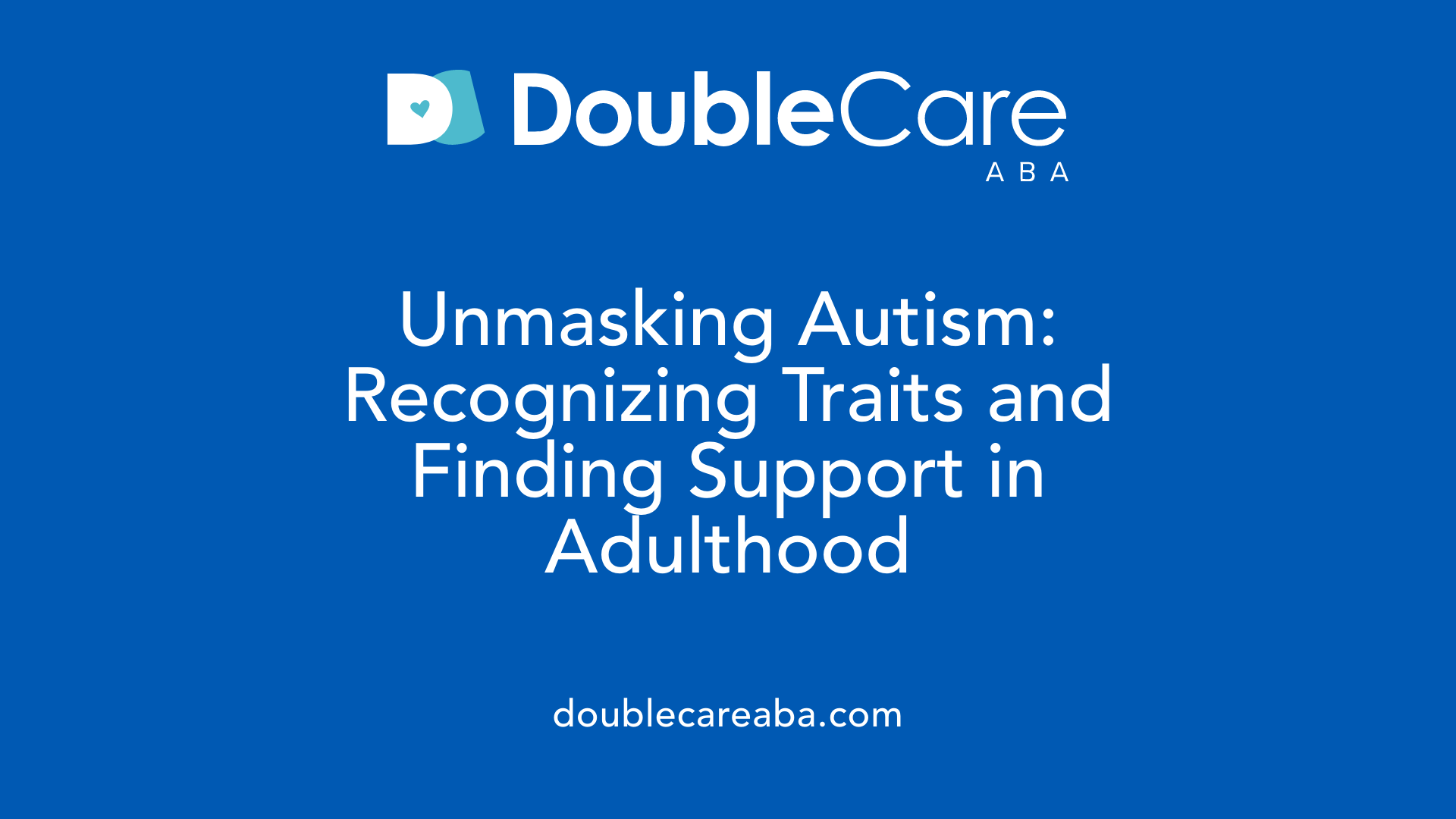
Recognizing Subtle or Masked Signs
Many adults on the autism spectrum initially recognize their traits through self-reflection or observations from family members. Signs can be subtle or masked, particularly in autistic women who may hide repetitive behaviors and social difficulties to meet social expectations. Masking behaviors such as forced eye contact, imitating social cues, or adopting different personas can complicate recognition and delay diagnosis. Awareness of these nuances is essential for adults considering assessment.
Path to Diagnosis in Adulthood
Diagnosis in adulthood is often prompted by a combination of personal insight, challenges in social or mental health contexts, and external observations. Because many adults camouflage symptoms, healthcare professionals undertake comprehensive assessments that include developmental history and behavioral observations. Accurate diagnosis relies on understanding that behaviors like literal interpretation of language, anxiety in social settings, and preference for routines are brain-based traits rather than personal choices.
Available Support and Interventions
Following diagnosis, adults with autism can access various support services tailored to their needs. Psychoeducational programs educate individuals about autism and coping strategies. Specialized interventions, such as Applied Behavior Analysis (ABA), focus on communication and social skills development. Support groups offer community connections and opportunities to build social skills in a safe environment. Additionally, autism-aware counseling and therapy can address mental health concerns related to masking and social anxiety.
These resources work together to provide adults with autism the tools to enhance their quality of life, manage challenges, and foster meaningful relationships.
Empathy, Knowledge, and Support: Keys to Thriving Together
Understanding whether your boyfriend has autism involves recognizing a constellation of traits related to social communication, behavior, and sensory perception. Awareness of these signs and the challenges they may bring into relationships helps foster compassion and effective communication. Behavioral therapies like ABA offer structured support to improve skills and independence, while tailored strategies within relationships promote mutual respect and connection. Whether or not your partner has autism, embracing neurodiversity and learning how to meet each other's needs paves the way for healthier, more fulfilling relationships.
References
- Signs of autism in adults
- Signs of autism in adults
- Adult Autism and Relationships
- 8 Signs Your Partner Is on The Autism Spectrum
- Signs that a child or adult may be autistic
- What are the signs of autism in adult males?
- Applied Behavior Analysis (ABA)
- 6 Benefits of ABA Therapy for Children with Autism
- Applied Behavior Analysis (ABA)














